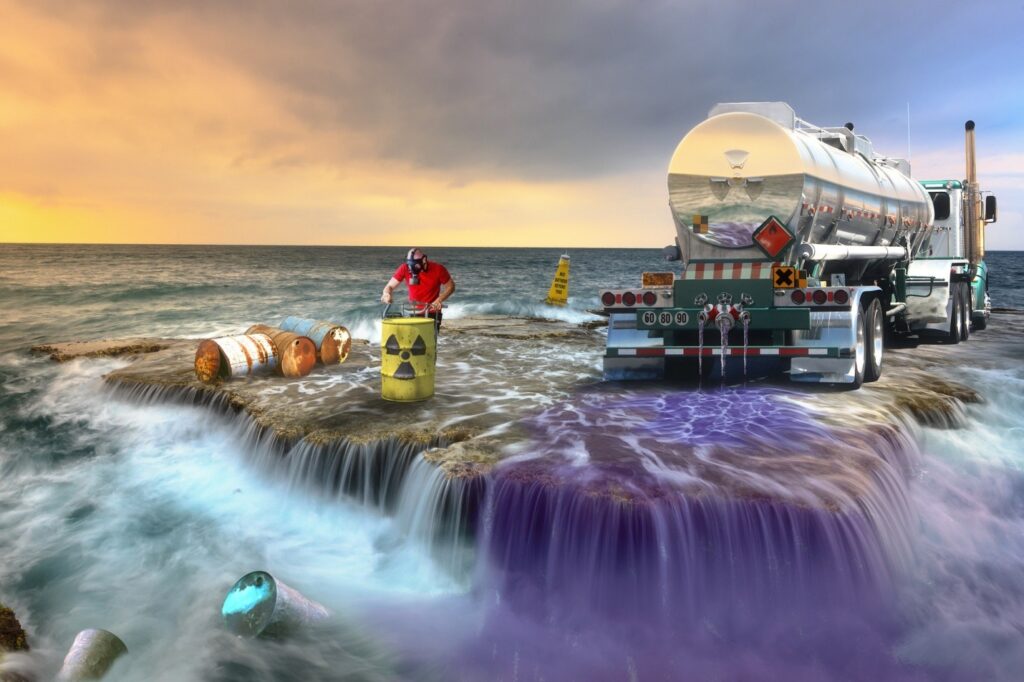The 7-Minute Rule for Reclaim Waste
The 7-Minute Rule for Reclaim Waste
Blog Article
Unknown Facts About Reclaim Waste
Table of ContentsA Biased View of Reclaim WasteExcitement About Reclaim WasteRumored Buzz on Reclaim WasteSome Known Incorrect Statements About Reclaim Waste What Does Reclaim Waste Do?
Residential sewage waste refers to the waste and items from a household septic tank. The proper administration and disposal of domestic sewage waste call for liquid waste to be moved to a sewer treatment plant where the correct approaches and tools are used to detoxify and dispose of waste.
Industrial waste typically includes prospective risks, such as combustible materials or a mix of fluid and strong waste products, and requires an advanced and thorough disposal process. The disposal of business waste usually includes the filtering of waste prior to transportation to ensure safe and correct disposal. Industrial waste is created from byproducts and overflow of industrial processes and production.
This type of waste can not use the very same sewer administration transport or procedures as septic or business fluids. The hazardous waste monitoring process requires the assessment and testing of fluid waste prior to it undertakes the disposal procedure (liquid waste disposal melbourne). Runoff waste is the fluid waste that comes from overflow and excess stormwater in extremely populated areas or cities
Drainage waste can trigger contamination and flooding otherwise taken care of properly. Find out more about sewer cleansing and waste administration. Guaranteeing proper waste management can prevent calamities and decrease environmental harm. Both people in household settings and experts in business or manufacturing markets can gain from comprehending the processes and policies of liquid waste administration.
About Reclaim Waste
Call PROS Solutions today to find out about our waste administration and disposal services and the correct methods to take care of the fluid waste you create.
(https://www.openstreetmap.org/user/reclaimwaste1)This so-called 'wastewater' is not only a vital source but, after treatment, will certainly be launched to our land, rivers or the ocean. Utilized water from bathrooms, showers, baths, cooking area sinks, laundries and industrial processes is recognized as wastewater.

water used to cool machinery or tidy plant and tools). Stormwater, a kind of wastewater, is runoff that flows from farming and city locations such as roofings, parks, gardens, roads, his explanation courses and gutters into stormwater drains, after rainfall. Stormwater moves without treatment directly to neighborhood creeks or rivers, ultimately reaching the ocean.
What Does Reclaim Waste Do?
In Queensland, most wastewater is dealt with at sewer therapy plants. Wastewater is delivered from residential or commercial sites with a system of sewage systems and pump stations, called sewerage reticulation, to a sewer treatment plant. City governments construct, keep and operate most sewage treatment plants. Operators are accredited under the Environmental Protection Act 1994 to release cured wastewater at an appropriate environmental standard into waterways.
The Division of Natural Resources encourages regional federal governments regarding managing, operating and preserving sewage systems and treatment plants. In unsewered areas, neighborhood federal governments may call for owners to set up individual or house sewer therapy systems to treat residential wastewater from commodes, kitchen areas, washrooms and laundries. The Division of Natural Resources authorises making use of family systems when they are verified to be efficient.
In some new class, therapy of some stormwater to remove litter, sand and crushed rock has actually started utilizing gross contaminant traps. Wastewater therapy occurs in 4 phases: Gets rid of solid matter.
Utilizes tiny living microorganisms knows as micro-organisms to break down and get rid of remaining dissolved wastes and great particles. Micro-organisms and wastes are included in the sludge.
The Best Strategy To Use For Reclaim Waste
Nutrient removal is not available at all sewer treatment plants because it calls for pricey specialised tools. Clear fluid effluent created after treatment might still contain disease-causing micro-organisms - liquid waste disposal melbourne.

Most wastewater streams into the sewerage system. Under the Act, neighborhood governments provide approvals and licences for ecologically appropriate activities (Ages) entailing wastewater releases that may have a regional influence.
Reclaim Waste Fundamentals Explained
Or else, examples are considered research laboratory analysis. Commonly several tests are required to develop the levels of each of the various pollutants such as oils, hefty steels and pesticides in water. Monitoring gives accurate info regarding water top quality and can validate that permit conditions are being satisfied. The details acquired through tracking provides the basis for making water high quality decisions.
Report this page